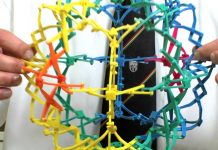Physical wellbeing after surgery is of utmost importance to any patient recovering from the cold steel of the operation room. Though there are many methods to obtain physiotherapy treatment, but one of the most extensive and intensive methods goes to rehab.
When people hear the word, “rehab”, they assume that it has something to do with addiction and something to be avoided like the plague. But rehabilitation can be a good thing, especially when you are in dire need of some serious healing. These days, rehabs don’t come with addictive pill prescriptions, but more holistic approaches to physical healing. Also, rehabs have other in-house patients and medical experts to tend to you, so your recovery is not made alone. One can choose what program they seem interested in. Here are the basics that are included in every rehab process:
- Physical therapy that helps with improving mobility, fitness and strength – this is the physical part of the recovery
- Assistance with performing everyday activities. This comes under the occupational therapy part of the program. Even simple tasks like getting out of bed, reaching out for something or picking something up can be difficult to accomplish if therapy is not endured properly.
- Language therapy. Sometimes trauma can leave a patient in shock and unable to express themselves properly, living a life of fear. Also, accidents cause issues with motor skills and moving say, a formerly broken jaw, will be painful and frustrating. So, speech therapy helps with patients being able to converse freely.
The other major part of physical therapy is dealing with the pain. Therapy exercises may be excruciatingly painful and most of the time leans towards dependence on painkillers and other pain-reducing medication. While at an overall program that support all parts of the healing process, you can go through the physical healing properly.








